A good book is a vital part of the gardener’s winter survival kit: when you can’t get outside, you can dream big about next year, lose yourself in someone else’s plot or discover new plants from the comfort of your reading chair. Here’s a selection of my favourite books published this year: all perfect for your Christmas wishlist.
1. Rhapsody in Green by Charlotte Mendelson (Kyle Books, 16.99)

This is without doubt my favourite gardening book of 2016. Charlotte Mendelson is a novelist who has fallen so hard for growing edible things that she considers it an addiction. Usually these kinds of books are written by people who have at least an acre of ground to play with: Mendelson, on the other hand, has what she calls a “comically small town garden, a mere six square metres of urban soil and a few pots”.
Rhapsody in Green is frank, funny and full of sentences that will make gardeners jump for joy: the wonders of lemon verbena; an obsessive need to lay your hands on at least ten varieties of lettuce leaf; hunting the neighbourhood for damsons to forage. If you want more of a taster of this book, Guardian Weekend published an extract back in September.
2. Gardenista: The Definitive Guide to Stylish Outdoor Spaces by Michelle Slatalla (Artisan, £28.99)
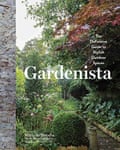
Gardenista is the stylish gardening blog of the same name in book form. It’s packed full of tasteful gardens that offer a welcome escape from your own sodden/boring/non-existent (delete as appropriate) garden.
There’s plenty of useful advice here, too, although I suspect most of us would rather simply salivate over the ‘twelve gardens we love’ section (An outdoor shower! A beautiful greenhouse!) than get cracking on any of the DIY projects this Christmas. But there’s lots of good advice on designing your garden too, from hard landscaping to planting. The section offering seven classic garden planting palettes is particularly useful.
3. RHS A-Z Encyclopedia of Garden Plants 4th edition, edited by Christopher Brickell (Dorling Kindersley, £75)

This encyclopedia is described as “the definitive garden reference”, packed with 15,000 entries, all lavishly illustrated. If you are the kind of gardener who likes to look a plant up in a book rather than go online for an answer, this is a must-have.
This is a beast of a book - the rope handle may look decorative, but you really will need it to haul this book about, as it weighs several kilos: it is a coffee table book for the simple reason that it may well break your bookshelves.
4. RHS How Do Worms Work? by Guy Barter (Mitchell Beazley, £14.99)

The Q&A is a well-worn staple of garden writing, but Guy Barter, the RHS’s chief horticultural adviser, livens up the format and makes this book a joy to read, with answers to questions like “how do bulbs know when to come up?” and “why is it that pests eat my favourite plants, but ignore the weeds”. The best questions, though, are the quirky ones you haven’t even thought of. My favourite is “which is the tastiest soil”? Nope, me neither.
This is a lovely book to dip into, and you may even find yourself reading it cover to cover.
5. Wild Flowers of Britain Month by Month by Margaret Erskine Wilson (Merlin Unwin, £8.99)
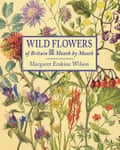
This is a jewel of a book, containing watercolour paintings of British native plants arranged by flowering month. The painter, Margaret Erskine Wilson, was an amateur botanist and watercolourist who produced her work over 45 years, starting out as a guide to help a friend learn the names of service tree, bladder campion and bird’s eye.
From garden escapes such as fuchsias to hedgerow charms such as dog rose, the plants are arranged not alone, like botanical illustrations, but as wonderful plant tapestries that can be appreciated as a tool for learning as well as things of beauty.
6. A Botanist’s Vocabulary by Susan K Pell and Bobbi Angell (Timber Press, £17.99)
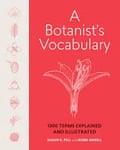
If you don’t know your palmate from your pandurate leaf, you may find this well laid-out guide to botanical terms a wonderful resource.
It’s tempting to think that botanical terms are just there to bamboozle the average amateur grower. But by learning the parts of a flower head, or what a viviparous plant can do that others can’t, it’s possible to enrich your whole gardening experience, whether you’re a botany student, a gardener or simply someone who wants to learn more about plants. Simple line drawings help to make the definitions crystal clear.
7. New Small Garden by Noel Kingsbury (Frances Lincoln, £20)
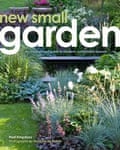
If you are starting out on a new garden in 2017, or even dreaming of doing so, Noel Kingsbury’s book is a great source of ideas. His vast knowledge of plants means this isn’t one of those books on small gardens that just treats the space like a set to be dressed with objects.
Kingsbury is best known for his work with Dutch landscape designer Piet Oudolf on naturalistic planting, but here he brings some of those principles to a small garden setting. Add to that the beautiful photography by Maayke de Ridder, and this makes for a most covetable book.
8. Wonderful Weeds by Madeline Harley (Papadakis, £25)
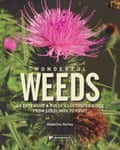
Most of us - gardeners included - are plant-blind when it comes to what we consider to be weeds. ‘Dandelion’ can mean anything with a yellow flower, and beyond nettles and daisies, the rest is just greenery that’s getting in the way of what we want to grow.
This book by botanist Madeline Harley isn’t a weed guide in the traditional gardening sense - it’s not the place to look for the merits of glyphosate versus a dandelion grubber - but it is a repository of information about common British weeds and their uses in folklore and medicine. The photographs show weeds not just in flower but as seedlings, their seeds and how they look in different settings, helping you to identify specimens more easily. Sections on pollination and regeneration strategies will be useful for anyone trying to control a particular weed, as well as illustrating the important role they have to play in our garden ecosystems.
9. An Orchard Odyssey by Naomi Slade (Green Books, £24.99)
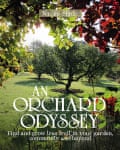
An orchard sounds like a terribly grand thing, but in this age of dwarfing rootstocks and patio trees, it’s possible to have your own orchard in the smallest of spaces. Naomi Slade’s book is part-practical guide to creating your own orchard, and part inspirational journey through the history and culture of growing fruit trees.
In my experience fruit trees offer the least work for the greatest return of any edible in the garden: you’d be a fool not to get some in the ground (or in a pot) this bareroot planting season. Let this book be your starting point.
10. Petal, Leaf, Seed by Lia Leendertz (Kyle, £16.99)
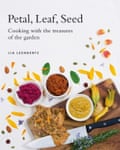
Is this a recipe book or a gardening book? This is a distinction people are desperate to make, but to me, anyone who grows food should automatically be just as interested in how to cook it. Lia Leendertz has written the perfect book for those of us who are never going to have 10-pole allotments’ worth of produce to use; rather, we have a handful of raspberries or coriander seeds, a courgette flower or two, or if we’re lucky, a brace of banana leaves.
This book shows how to use tiny, unexpected harvests from all corners the garden - some unexpected - to make delicious dishes. We ran an extract of this book, including some of Leendertz’s fabulous recipes, earlier in the year, if you want to try before you buy.
- Is there a gardening book published in 2016 you’d like to recommend? Please add your thoughts below.
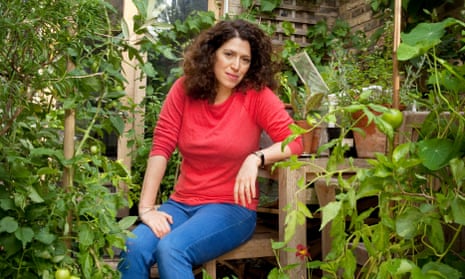
Comments (…)
Sign in or create your Guardian account to join the discussion